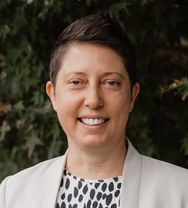
Catchment Condition Survey reveals insights and opportunities for improving water quality
Media release June 20, 2023
A relatively inexpensive and easy way to monitor progress towards improving water quality is being used again by Living Water, a partnership between the Department of Conservation (DOC) and Fonterra.
In 2018 Living Water used a Catchment Condition Survey (CCS) in the Wairua River catchment to collect information using a physical inspection of properties. The CCS is a field survey that provides a snapshot of the catchment condition based around an assessment of physical features such as stock access and vegetation along streams, soil erosion, stream structures, and significant natural areas in the catchment.
Visiting properties provides an opportunity to engage with landowners and hear directly from them about issues they’ve experienced, such as flooding and erosion due to events such as Cyclone Gabrielle. There’s huge value in engaging with landowners in person says Sarah Yarrow, Living Water National Manager.
“Not only are surveys relatively inexpensive and easy to do, the Catchment Condition Survey allows direct engagement with landowners who can share their knowledge of issues and solutions tried over time in their area of the catchment”, says Yarrow. “Collectively the insights of many landowners add tremendous value to the recording of the physical and visible aspects of the catchment. It’s important to understand how the landowners feel about factoring the environment into their farm planning and changing their land use management. We need to know how they’ve found the experience so we can refine and improve how we engage with farming communities on environmental issues.”
Five years after the first survey was conducted in March 2018, Living Water are spending 5 days this month in the Okarika Pocket, an area within the Wairua River catchment. A team will visit 25 mostly dairy farms, to conduct a physical inspection comparing the current state with what was recorded five years ago, for example erosion, stream fencing, native vegetation and fish passage barriers. Photographs are taken to record changes and compile a visual record of the catchment. Yarrow says repeating the survey after five years is essential to understand how the catchment has changed due to planned interventions, such as fencing and riparian planting, and unplanned impacts such as flooding due to Cyclone Gabrielle and other weather events.
“Improving water quality requires an accurate and in-depth knowledge of the issues to be resolved”, says Yarrow. “Catchments change over time. The information we gathered five years ago in the Catchment Condition Survey may no longer be reliable for planning further activities. It’s essential information about a catchment is up-to-date, and that’s why we’re returning to the Okarika Pocket in the Wairua catchment.”
During the survey data and visual imagery gathered is uploaded to an online database. Once the survey is completed the information collected will be analysed and a report prepared. In addition to identifying which of the planned interventions, such as fencing and riparian planting, have been completed, the report will also recommend next steps for the catchment. Re-engaging with landowners and hearing directly from them about what’s changed is incredibly valuable, says Yarrow.
“Landowners are on the ground seeing and experiencing issues, such as flooding and erosion, or pests and invasive weeds, which may not be obvious from looking at a waterway on one particular day”, says Yarrow. “The field survey allows landowners to candidly share their experiences of what’s threatening water quality on their property and what they’ve tried to resolve water quality issues. Particularly in the aftermath of Cyclone Gabrielle we need to know what’s been tried, what’s worked and what hasn’t, to plan and prioritise activities confidently within a catchment. The catchment condition survey has and will give us that information.”
